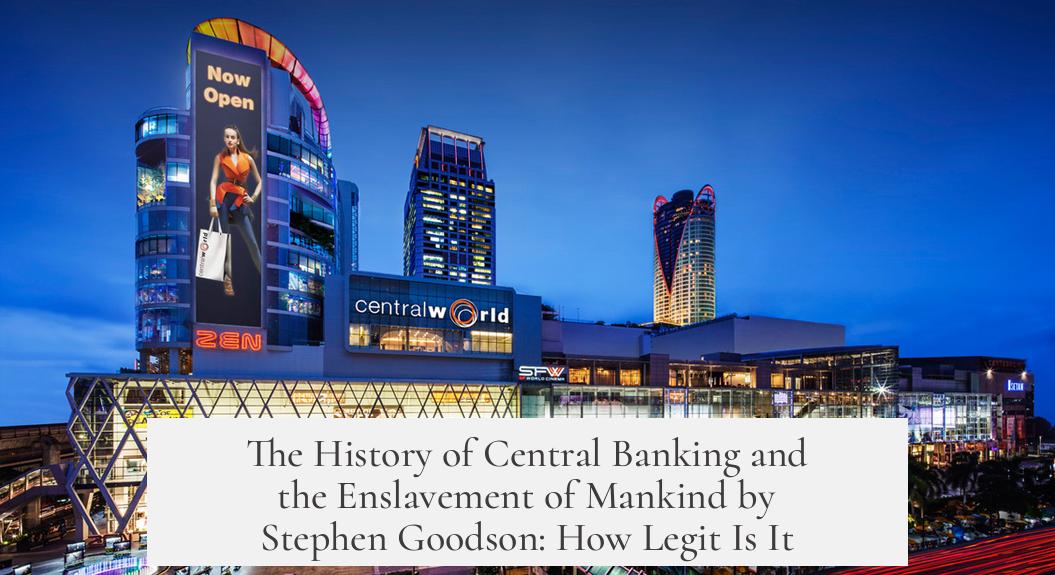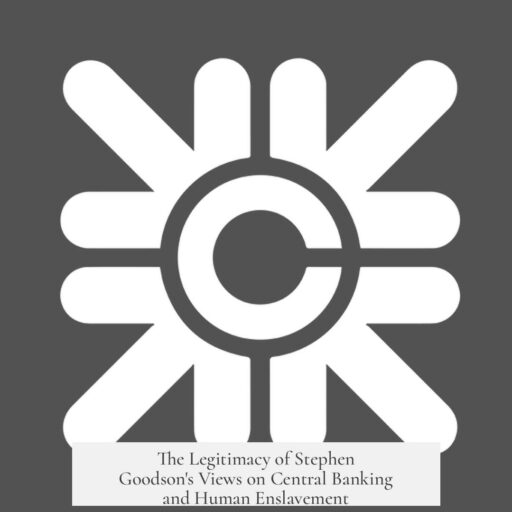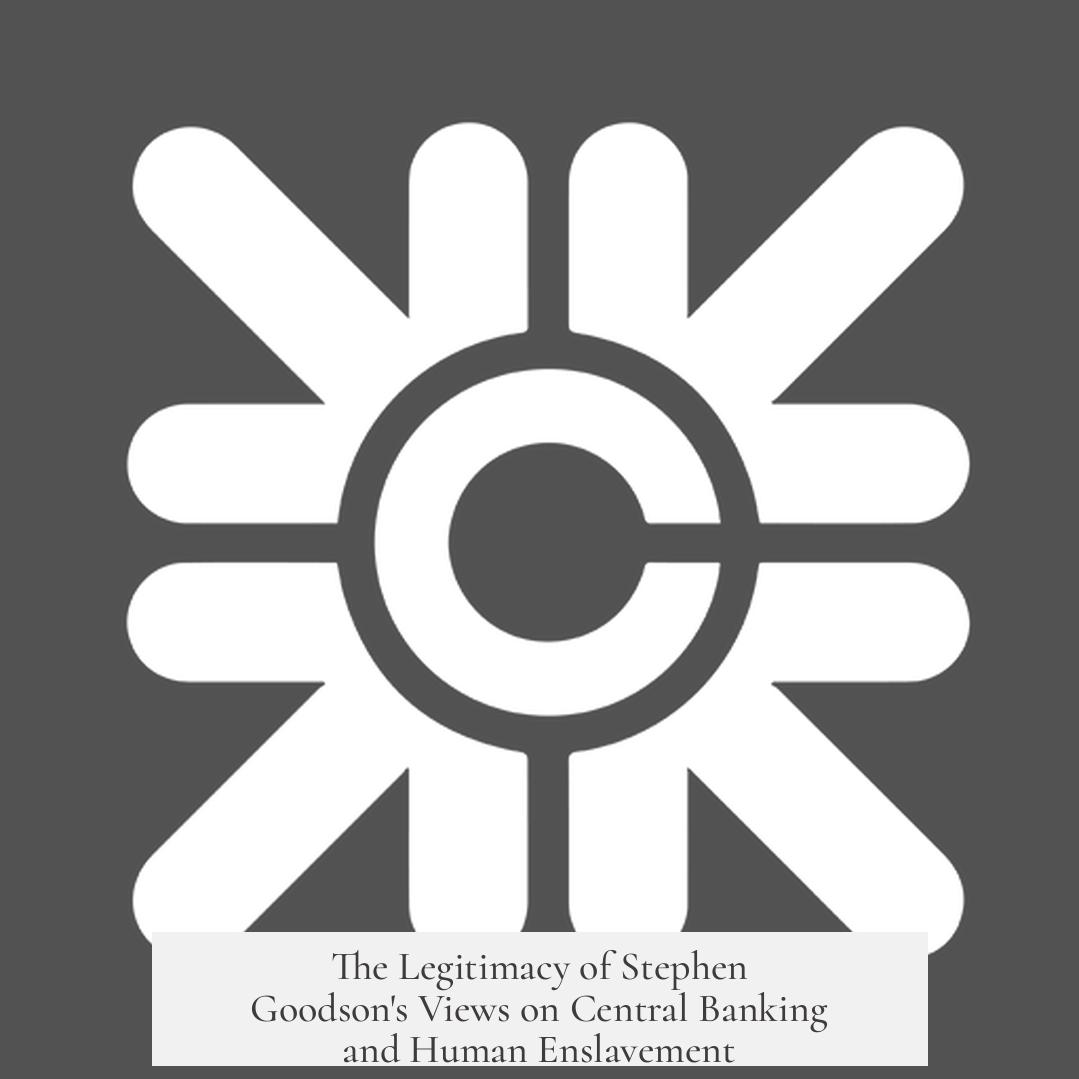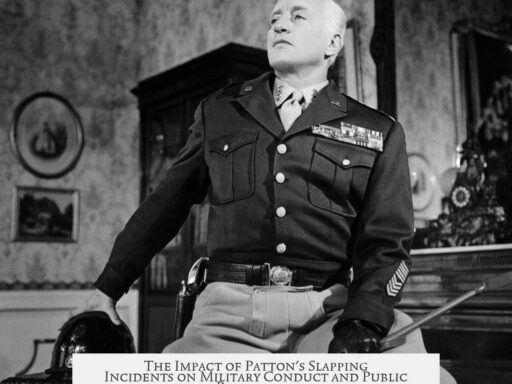The book The History of Central Banking and the Enslavement of Mankind by Stephen Goodson lacks legitimacy due to numerous historical inaccuracies, biased interpretations, and associations with discredited conspiracy theories. Goodson’s claims frequently contradict established historical facts, and his perspective is widely criticized for promoting anti-Semitic views rather than objective analysis.
Stephen Goodson is widely considered an anti-Semitic conspiracy theorist rather than a credible historian. His narrative includes numerous disproven statements, such as accusations that Jewish groups destroyed the Roman Empire or orchestrated major historical events like the Norman invasion or the French Revolution. These claims have no basis in verified historical research and reflect his strong ideological bias.
Goodson also misrepresents key historical timelines and economic concepts. For example, he incorrectly places the start of the Roman gold era around 27 BC, whereas historians date it to the 300s AD. Additionally, his attempt to draw a strict line between state banking and central banking is described as “absurdly artificial.” This shows a misunderstanding of financial history and diminishes the accuracy of his central thesis.
His portrayal of institutions like the Banque of France as offering interest-free loans is also false. Evidence used to support these claims mainly consists of unrelated reforms under Napoleon, rather than proof of interest-free financing. Furthermore, Goodson wrongly attributes Napoleon’s death to poison, though medical consensus confirms it was stomach cancer.
He attributes financial crises like the Panic of 1819-1821 to artificial manipulation, ignoring well-researched causes such as post-Napoleonic agricultural price crashes, land speculation fueled by forced acquisition of Native American lands, and financial strains from the Louisiana Purchase bonds.
Goodson’s writings frequently employ loaded language and favor extremist views, including describing Soviets as “Judeo-Bolshevik” and portraying Nazis in a positive light. Such biased framing undermines any historical validity and aligns him with discredited and extremist ideologies.
- Stephen Goodson is considered an anti-Semitic conspiracy theorist, not a credible historian.
- His claims contain numerous historical inaccuracies and false timelines.
- He distorts central banking history with unsubstantiated and misleading arguments.
- Goodson’s bias and use of extremist language undermine his legitimacy.
- Scholarly sources contradict his major assertions on banking, history, and economics.
The History of Central Banking and the Enslavement of Mankind by Stephen Goodson: How Legit Is It?

Let’s get straight to the point: Stephen Goodson’s book, “The History of Central Banking and the Enslavement of Mankind,” is widely discredited and riddled with inaccurate claims. If you picked it up hoping for a serious, well-researched history, prepare for a wild ride into conspiracy theories and biased interpretations. But why exactly is this book viewed so skeptically? Let’s unwrap the layers.
Goodson’s work dives into the history of central banks, a topic that fascinates millions. The idea that central banks have a dark, controlling influence aligns with some popular conspiracy themes. However, Goodson’s version of this narrative relies heavily on unsubstantiated claims and offensive generalizations.
Stephen Goodson: Author, Historian or Something Else?
Calling Goodson an expert is like calling a cat a canine. The man has been labeled “an extremely badly informed anti-Semitic crank” by critics. His writing brims with anti-Semitic sentiment, pushing conspiracy theories that blame Jewish people for some of the world’s biggest historical events. Imagine saying Jews destroyed the Roman Empire, financed the Norman invasion, or incited the French Revolution. Sounds outlandish? That’s because there’s no credible evidence to back these claims.
His language isn’t just biased; it’s loaded and inflammatory. Referring to Soviet authorities as “Judeo-Bolshevik” throws up red flags about ideological bias. What’s more, Goodson’s kind treatment of Nazis in some parts suggests a disturbing revisionism. This is hardly what you want from a scholarly work on history or finance!
Historical Errors: Where Goodson Trips Up
History buffs would cringe at many factual errors. Goodson claims the Roman gold era started in 27 BC. In truth, historians mark the beginning of Rome’s “gold era” quite late—around the 300s AD. That’s a huge mismatch in timescale.
Another tangled web is his attempt to separate “state banking” from “central banking.” Experts find this distinction meaningless or rather artificial. Central banking evolved over centuries from various forms of state banks. Simplifying them into unrelated concepts distorts history.
Goodson’s remarks on the Banque of France highlight further inaccuracies. He insists this state bank offered interest-free loans. That’s just not true. He confuses Napoleon’s separate economic reforms with banking policy. The Banque de France did charge interest; banks generally rely on interest to operate. This mistake alone undermines the book’s reliability.
Let’s talk Napoleon. Goodson insists the legendary French leader was poisoned. Modern historians and medical research confirm Napoleon died of stomach cancer. This huge historical inaccuracy reveals his tendencies towards sensationalism.
Economic Events Misinterpreted
The Panic of 1819–1821 is another puzzle Goodson misplaces. He implies it was engineered artificially by banking conspiracies. The truth is much more complex:
- Post-Napoleonic Europe had crashing agricultural prices.
- Terrible weather prolonged this crash and worsened farming output.
- Large land speculation followed the forced acquisition of Native American lands.
- The U.S. government bonds for the Louisiana Purchase maturing drained circulating specie.
All these elements combined without any involvement of shadowy banking cabals. Economic downturns rarely have a single villain; they’re tangled messes of factors including politics, climate, and markets.
Why Does This Matter?

Discussing central banking critically is important. Banks shape economies, influence money supply, and affect our daily lives. Misinformation makes it harder to understand real issues. It distracts from genuine concerns like monetary policy, inflation, or financial stability.
Goodson’s book feeds a narrative promoting fear and division rather than clear insight. If you want to grasp central banking’s role historically and today, look for sources grounded in fact.
What Does Real History Say About Central Banking?
Central banks emerged from early experiments in public banking during the 17th century, like the Bank of England (1694). They initially helped governments finance wars but evolved into controllers of national money supplies and lenders of last resort. Central banks today influence interest rates and inflation, but most operate transparently under government oversight.
This complex story is boring to some, but accurate. Interest-free loans? Not a norm. Medieval bankers didn’t secretly control empires. Histories exclude massive conspiracies woven around ethnicity or race.
So, Should You Read Goodson?
Enjoy a historical conspiracy thriller? Maybe. Want reliable facts about central banking? Skip this book. Goodson’s work is an example of how mixing historical inaccuracies with personal biases can create misinformation that misleads readers.
Learning about complex institutions calls for critical thinking. Ask:
- Is the evidence robust?
- Are multiple sources consistent?
- Does the author have a clear bias?
Goodson fails in these tests. Good history demands skepticism and verification—not simply stories that align with one worldview.
Wrapping It Up
The History of Central Banking and the Enslavement of Mankind by Stephen Goodson is largely not legitimate as a factual source. It contains significant inaccuracies, anti-Semitic rhetoric, and poor scholarship. For a genuine grasp on central banking’s evolution, seek credible historians and economists’ work.
In a world flooded with information, distinguishing fact from fiction is key. Don’t let conspiracy theories fool you—they only complicate understanding of economics, history, and our shared global story. Instead, arm yourself with knowledge based on evidence and open-minded inquiry.




